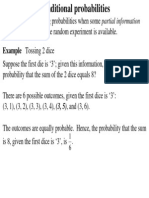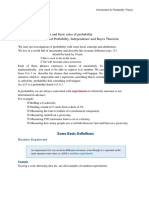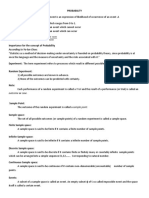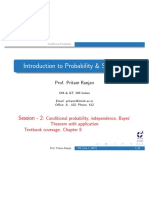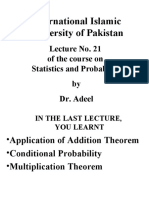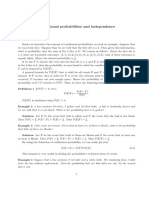0% found this document useful (0 votes)
95 views40 pagesProbability and Random Variables: Abu Bakr Siddique
A and B are independent if:
- Urn 1 contains the same proportion of black and white balls as Urn 2.
In this case, the probability of drawing a black ball is the same regardless of which urn is selected. So knowledge of whether Urn 1 or Urn 2 was selected does not provide any information about the color of the ball drawn.
If the urns contain different proportions of black and white balls, then A and B would be dependent since the probability of drawing a black ball would differ based on whether Urn 1 or Urn 2 was selected.
So in summary, A and B are independent if both urns contain the same proportion of black and white balls. Otherwise they are dependent
Uploaded by
Arshid AliCopyright
© © All Rights Reserved
We take content rights seriously. If you suspect this is your content, claim it here.
Available Formats
Download as PPTX, PDF, TXT or read online on Scribd
0% found this document useful (0 votes)
95 views40 pagesProbability and Random Variables: Abu Bakr Siddique
A and B are independent if:
- Urn 1 contains the same proportion of black and white balls as Urn 2.
In this case, the probability of drawing a black ball is the same regardless of which urn is selected. So knowledge of whether Urn 1 or Urn 2 was selected does not provide any information about the color of the ball drawn.
If the urns contain different proportions of black and white balls, then A and B would be dependent since the probability of drawing a black ball would differ based on whether Urn 1 or Urn 2 was selected.
So in summary, A and B are independent if both urns contain the same proportion of black and white balls. Otherwise they are dependent
Uploaded by
Arshid AliCopyright
© © All Rights Reserved
We take content rights seriously. If you suspect this is your content, claim it here.
Available Formats
Download as PPTX, PDF, TXT or read online on Scribd
/ 40

















